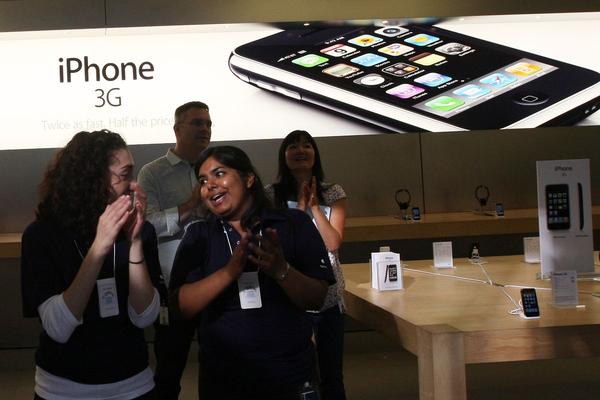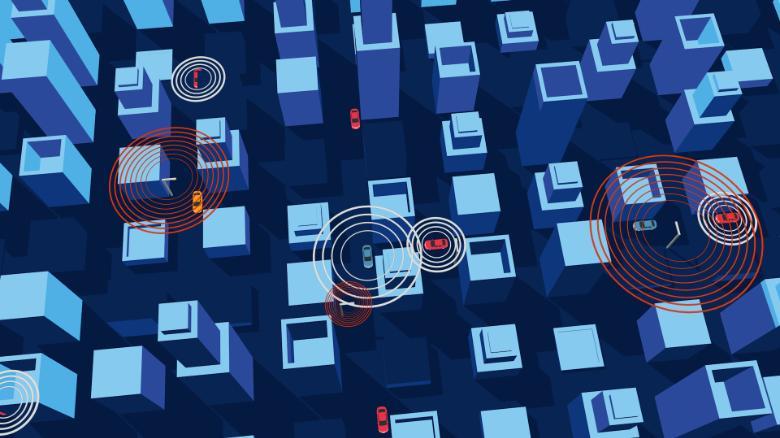
3G must die so 5G can live
It’s time to say goodbye to 3G, the wireless technology that gave our phones near-instantaneous access to the web and helped make everything from the Apple App Store to Uber an everyday part of our lives. More than two decades after its launch, wireless service providers are shutting down 3G to clear the way for its faster and flashier successor: 5G.
The expansion of 5G is welcome news for the growing number of people with 5G-enabled devices, and it could be a critical step toward more advanced technologies, like self-driving cars and virtual reality. But the 3G shutdown will also disable an entire generation of tech: everything from 3G phones to car crash notification systems. For the people who rely on these devices, this transition will cut off a cellular network they’ve depended on for years, and in some cases, disconnect crucial safety equipment.
“The number of 3G devices has been decreasing steadily,” Tommaso Melodia, the director of Northeastern’s Institute for the Wireless Internet of Things, told Recode. “Now it’s at the point where carriers are starting to say, ‘It doesn’t make a lot of sense for us to continue to use these precious frequency channels for 3G. Let’s turn it off.’”
Ideally, wireless providers could keep both 3G and 5G networks up and running, but the physics of the radio spectrum that cellular technology relies on means that companies have to make a choice. The radio spectrum includes a wide range of frequencies, which are used to connect everything from AM/FM radios to wifi networks, and is regulated by the Federal Communications Commission (FCC). Because there are a limited number of frequencies the agency sets aside for cellular service, wireless providers have to divide up the spectrum that they’re allocated to run multiple networks, including their 3G, 4G, 5G, and eventually 6G, services.
The FCC does make new bands of frequencies available to wireless providers through spectrum auctions, during which wireless providers can bid on rights to specific bands. But winning bids can be in the billions of dollars, so providers try to use the spectrum they already have as efficiently as possible. By turning off older generations of cellular technology, companies can repurpose the frequencies in order to improve newer networks, like 4G and 5G. AT&T will go first and shut down its 3G network on February 22, followed by T-Mobile in July and Verizon at the end of the year.
Not everyone will be affected by the 3G shutdown. Many of the cell-phones manufactured in the past few years include hardware that can connect not only to 3G networks but also to 4G and 5G, so they won’t be impacted. But there are still some phones that only work with 3G networks. Once 3G goes offline, these devices won’t be able to connect to a cellular network, which means they won’t be able to send texts, make phone calls, or access the internet without wifi. Any emergency alarm service that depends on 3G will also stop working. These include certain medical and security alarms, as well as some voice assistants, navigation software, and entertainment systems built into cars. Older Kindles, iPads, and Chromebooks designed to connect to 3G networks will be affected, too.
While the 3G shutdown will come with its own set of consequences, the expansion of more advanced networks should bring better speeds and reception to customers with 4G and 5G devices. 4G is 500 times faster than 3G, according to Verizon, and 5G should be even faster than 4G once it’s fully turned on. 5G will also come with lower latency, which means you’ll have very little lag when you’re connected to the internet. This lower latency will make it easier to use your phone for complicated tasks in real time, like playing an online video game or participating in a live telehealth session.
In the meantime, 3G device owners need to brace for the imminent 3G shutdown. Some may not even knowtheir service is about to go offline. Depending on their provider, these customers may only have a few weeks or months to upgrade their tech. Right now, it’s not clear they’ll be able to make the switch in time.
When your phone connects to a cellular network, it sends and receives signals on the frequencies to which that specific network has been assigned. Those signals travel over those frequencies to transmission stations, like cell towers, which are connected to the internet cables that provide your web connection. This is similar to the way a laptop connects to a home wifi network that’s powered by an internet router.
In the US, 3G generally runs between 850 megahertz and 1900 to 2100 megahertz frequencies. These sections of the spectrum are useful for both digital voice and internet data, which is what made 3G so exciting when it was first introduced in the late 1990s. Wireless carriers have since developed new equipment and better technology, which they’ve used to launch their 4G and 5G networks. Because these networks can carry more data at a faster rate, wireless providers want to run them on the frequencies they currently use for their 3G networks. And that can only happen if they turn 3G off first.

“It’s a one-or-the-other choice,” said Kevin Ryan, a professor who researches wireless systems at the Stevens Institute of Technology. “It would be analogous to trying to have two FM radio stations broadcasting at the same frequency.”
Aside from the logistics of how radio spectrum works, wireless providers are also reallocating 3G spectrum because it makes more financial sense for them. Verizon and AT&T estimate that less than 1 percent of their service still runs on 3G networks, while 90 million 5G devices shipped in the last year alone. Once 3G is finally turned off, wireless providers can devote more resources to expanding their 5G networks and convincing customers to upgrade their service plans.
“Operators are spending a lot of money for the spectrum, and they have to pass those costs on to the consumers. That’s why we pay a very high price for cellphone service,” explains Sundeep Rangan, the associate director of the NYU Wireless technology research center. “Those operators, for that amount of spectrum, want to send as much data, or serve as many users, as possible.”
While the 3G shutdown may feel sudden, it isn’t surprising. Carriers stopped selling 3G devices years ago, and many have spent the past several months notifying their remaining 3G customers that it’s time to upgrade their tech. 3G isn’t the first network to go offline, either. 1G, the cellular network that supported analog voice devices, like the brick-sized cellphones in ’80s movies — hasn’t been operational for decades. Though T-Mobile still supports 2G devices, Verizon and AT&T both shut down their 2G networks several years ago. By the end of 2022, 3G will be gone, too.
We don’t know exactly how many, but millions of operational devices throughout the US could be left unconnected when 3G sunsets. Many of these devices include hardware that can’t be adapted to connect to 4G and 5G networks. If you have one of these devices, you should have already heard from your wireless provider about your next steps. But if you want to double-check, you can research your specific device or reach out to your wireless provider. You can also try checking your phone’s settings or user manual, or just keep an eye out for a 4G or 5G connection on your device as you go about your day.
The 3G technology systems that are built into cars are generally supported by a major wireless provider, and they’ll stop working whenever that provider officially shuts down its 3G service. CNBC and Consumer Reports have released lists of known affected car models, but there’s no reason not to check with your car’s manufacturer just in case. Cars built in the mid-2010s appear to be the most likely to be affected by the 3G shutdown, but even some cars released in 2020 may need an upgrade.
There are also 3G devices that are meant for emergencies. Along with some medical and security alert systems, prepaid 3G phones and deactivated 3G phones, which can only call 911, will go offline. Elderly people, people who live in rural areas, low-income people, people experiencing homelessness, and survivors of domestic violence are more likely to rely on these devices. Because people only turn to these devices in extreme circumstances, they may not realize until long after 3G shuts down that they need to be replaced, creating a potentially critical safety issue.
That’s why some think that 3G should stay online for a while longer. AARP says the pandemic has prevented many older people from updating their tech, and wants the shutdown pushed back to the end of the year. Alarm companies, including those that manufacture fire and carbon monoxide detectors and home security systems, have also asked for an extension. They say that the computer chip shortage has gotten in the way of their efforts to produce and install replacement devices.
But you shouldn’t bet on a delay. If you have a 3G device, the best time to upgrade is now. If you know someone who uses one of these devices, it’s worth checking in and seeing if you can help them find a replacement.
Inevitably, history shows that cellular networks come and go. The next cellular network, 6G, may be less than a decade away and could be used to introduce everything from 3D holograms to internet-connected clothing. At that point, 5G won’t seem so new and exciting anymore, and 4G’s time will likely be up.
Will you support Vox’s explanatory journalism?
Millions turn to Vox to understand what’s happening in the news. Our mission has never been more vital than it is in this moment: to empower through understanding. Financial contributions from our readers are a critical part of supporting our resource-intensive work and help us keep our journalism free for all.Please consider making a contribution to Vox today.
}})